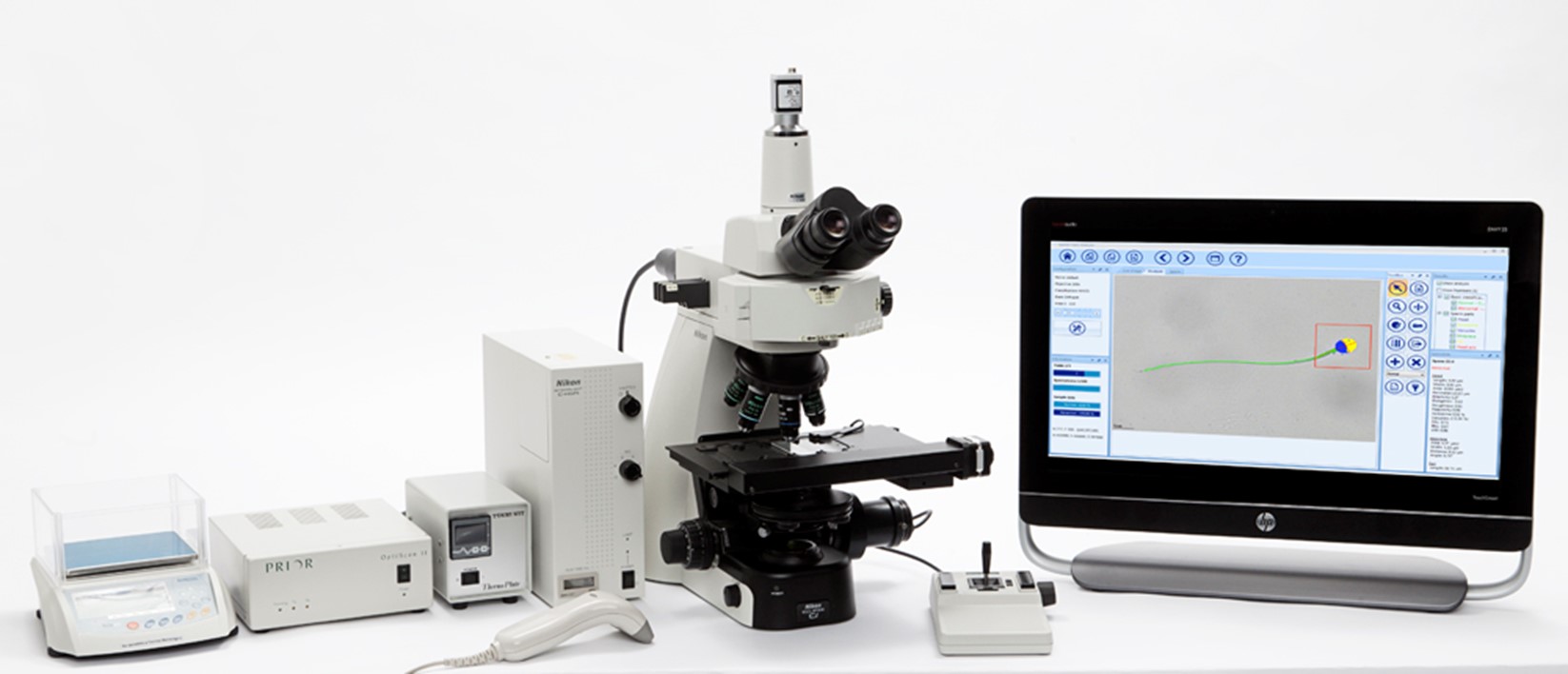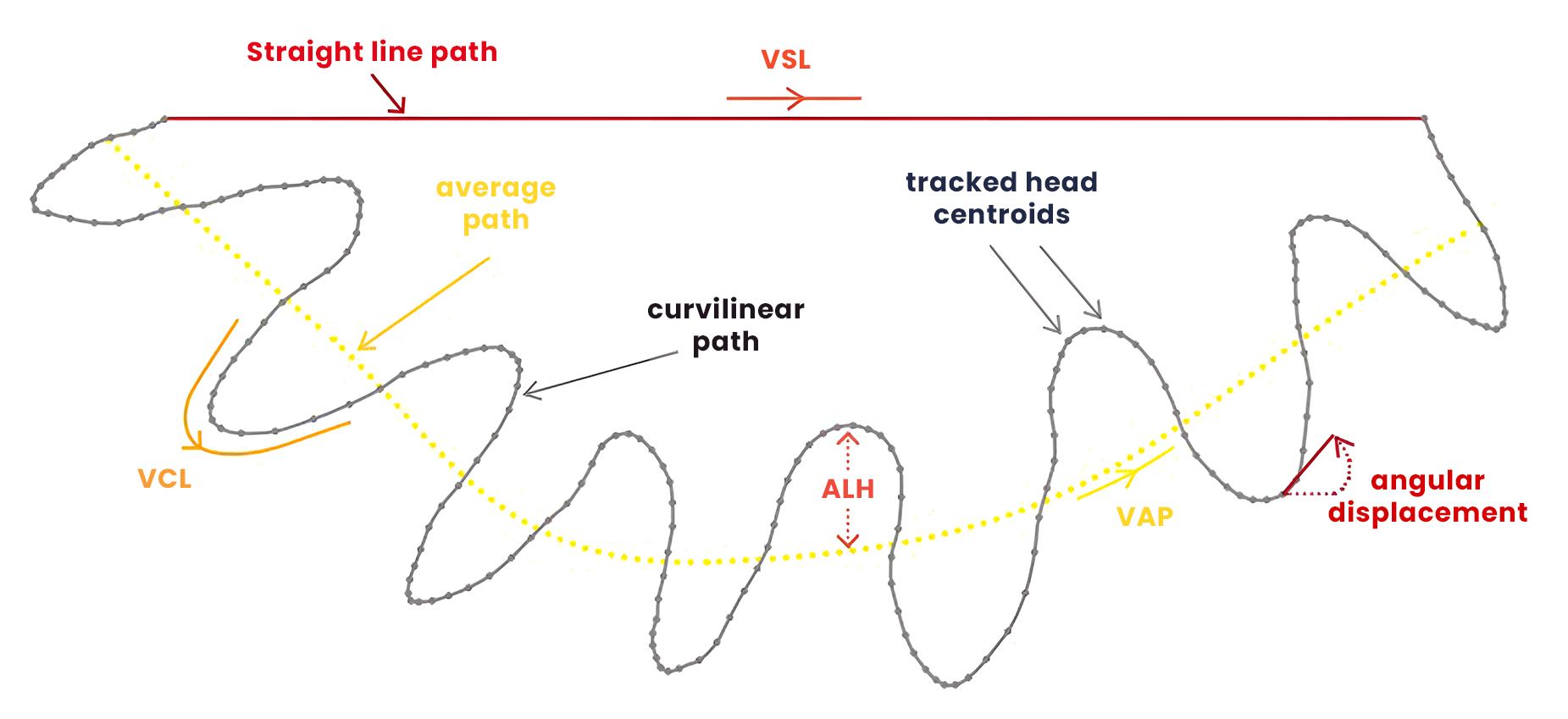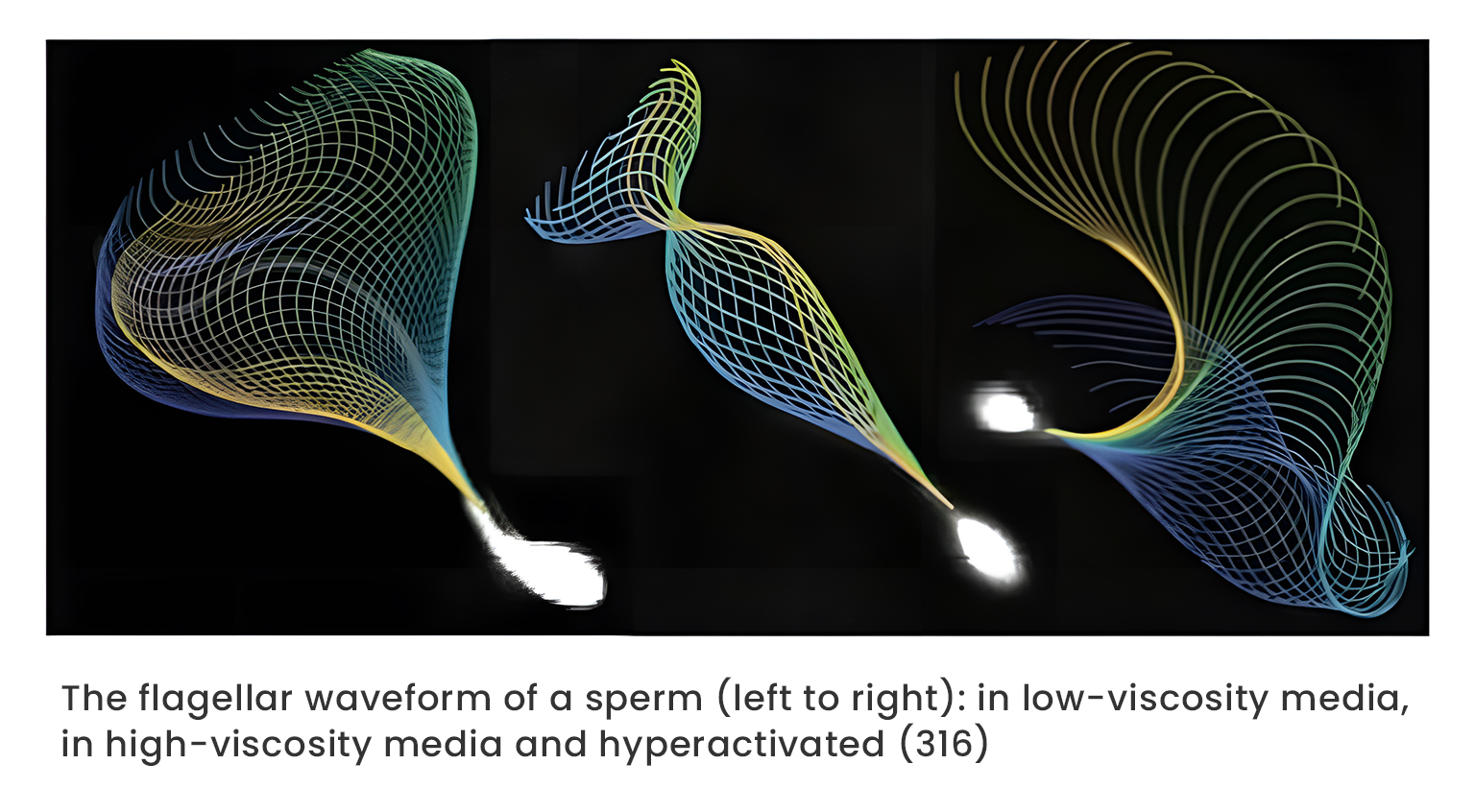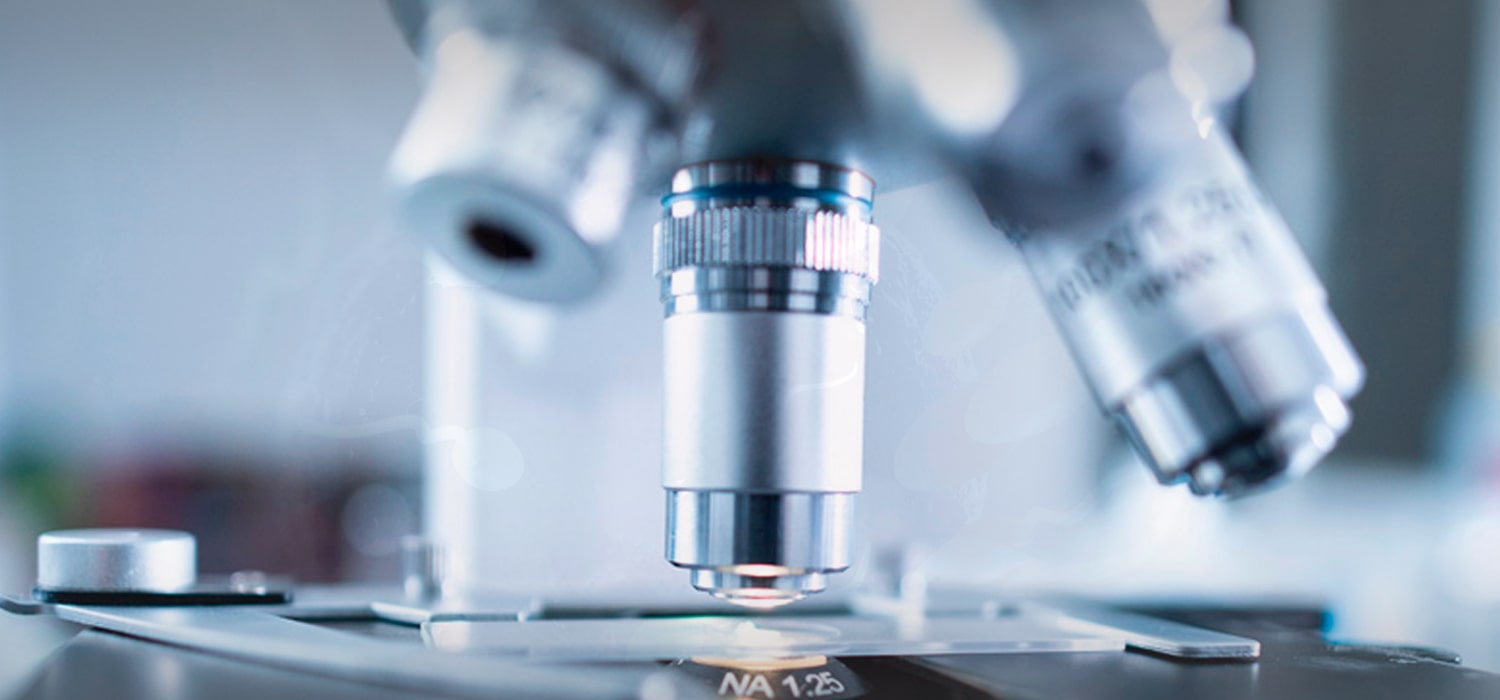CASA (COMPUTER-AIDED SEMEN ANALYSIS)
Over approximately 40 years, CASA systems have developed through advancements in devices to capture images from a microscope. They have been made to quantitatively measure several aspects of sperm structure and function without bias, intending to provide high levels of intra and inter-laboratory consistency. CASA allows dependable analysis of semen images. It can process many images with high consistency, accuracy, and repeatability.

How it works:
CASA system uses an advanced electronic imaging system to visualize and take multiple high-quality images of the sperm. These images are analyzed by a software program with the added algorithms to measure different sperm parameters. CASA instruments should be connected to computing software that allows data organization and statistical analysis of all parameters.
Sperm concentration and motility
Features of motility and sperm concentration can be studied in undiluted semen samples with the absence of excess debris and contaminants. Most CASA systems use negative phase contrast microscopy for sperm concentration and sperm motility determination which will not distinguish between sperm and background particle. Few systems like SCA CASA systems use positive phase contrast microscopy which clearly distinguishes between sperm and background particles. fluorescent DNA stains + tail detection algorithms allow sperm concentration and percentage motile sperm to be more accurately determined.
CASA systems can recognize and study motile spermatozoa; henceforth they are best used for the kinematic study of spermatozoa. They capture images of each sperm by following its speed and the path it covers. To obtain Movement parameters – the tracks of at least 200 motile spermatozoa should be studied. Some of the important parameters studied are as follows,
Casa Terminology:
Some standard variables measured with CASA systems as shown in the figure below are as follows
VCL - velocity along the curvilinear path: Time-averaged velocity of sperm head moving along the path traced out by the sperm
VSL - velocity along the straight-line path: The velocity calculated along a straight line between the first and last points of the path.
VAP - velocity along the average path. Time-averaged velocity along the smooth curved path, calculated according to the algorithm embedded in the CASA systems. These values are different in different systems
ALH - the amplitude of the lateral displacement of the head about the average path. These values are different in different systems
MAD, mean angular displacement (degrees): time-averaged absolute values of the instantaneous angle of rotation of the curvilinear path.

Using CASA to evaluate sperm hyperactivation
Hyperactivation(HA) is a significant phenomenon of human sperm established through capacitation (the process of obtaining the capacity to fertilize). HA is comprised of behavioral changes in the flagellar waveform such as the increased amplitude of flagellar beating, reduced beat frequency, and non-progressive side-to-side yaw. Hyperactivation has been connected to fertilization and live birth outcomes in humans and animals.
Hyperactivation is the only kinetic parameter of clear clinical value. The percentage hyperactivation can be recognized (>20% HA associated with potential fertility) by using a combination of kinematic parameters. Head centroid tracking of sperm and mainly flagellar movement study is done.
It is now even possible to automatically study the flagellar waveform of swimming cells. In spite of the complexity of studying a moving flagellum by focusing on and making it visible, it can allow a range of potential uses in sperm research, diagnostic, toxicological, and therapeutic. We can also assess energy expended by a cell by studying a beating flagellum in a fluid medium with known viscosity. We can also interpret the variance of the energy expenditure in a population.

Sperm morphology
Use of CASA systems for sperm morphology study depends on the high level of standardization and excellence in staining because the results are easily influenced by differences in staining. To help eliminate variation in morphology study, automated staining systems may often be a practical combination for the CASA system. Computerized morphology analysis systems have better impartiality, accuracy, and reproducibility than manual systems. Accuracy and reproducibility can be at least as high as 92%. However, reproducibility can be disrupted by procedural variations, such as focus, lighting, sample prep, and staining, and by technical difficulties which happen particularly when sperm concentration is low. CASA is able to accurately, quantitatively, and very rapidly quantify sperm morphology indices such as the teratozoospermia (TZI) and multiple anomalies index (MAI). These indices denote the number of abnormalities per sperm or abnormalities of the sperm population.
Clinically, Computerised normal sperm morphology outcomes are significant predictors of both fertilization rates in vitro and pregnancy. Also, Sperm with head morphology features similar to that of a sperm bound to Zona Pellucida can significantly and independently relate to natural pregnancy rates when added to their VSL parameter, in a large group of sub-fertile couples.
Computational advances
Developments in image-processing algorithms are allowing the examination of sperm in larger numbers and with extra detail than before. Innovative systems are intelligent enough to study an individual cell motility path in a highly concentrated sample. Our understanding and monitoring of cell motility have improved with CASA systems. With advancements in algorithms, we can analyze vitality, acrosome reaction, DNA fragmentation, and the presence of leukocytes in a semen sample. In spite of huge data produced by CASA systems, the task is now focused on finding consistent biological meanings from this information.

Factors affecting the performance of CASA:
- CASA unit necessitates precise installment to guarantee optimum functioning. Manufacturers specify definite settings. To get reliable and reproducible data, QC materials should be used to calibrate the instruments.
- Most CASA systems deliver accurate results when sperm concentration is between 2- 5 million cells/ml. In higher concentrations, error could occur which demands sample dilution with seminal fluid from the same patient.
- As previously mentioned, sample preparation methods and staining should be consistent to get reproducible results in CASA.
- Challenging to compare results between different instruments and also between manual and automated analysis.
In conclusion, when cautiously validated, present CASA systems offer vital information to understand varied sperm responses to changes in their microenvironment. Even though CASA results and results of the manual method are not comparable, when optimally standardized and validated CASA systems may meet the needs of a clinician.
For more info, Visit : www.medlineacademics.com
